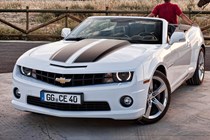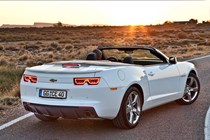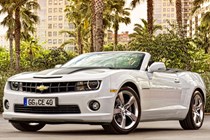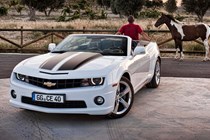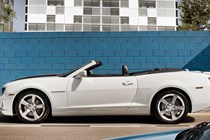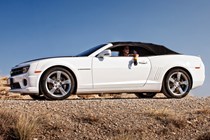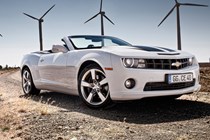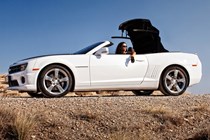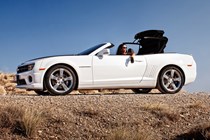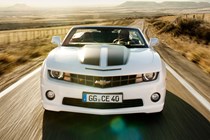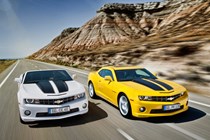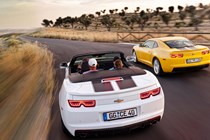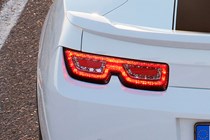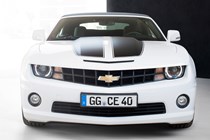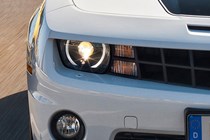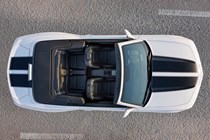Chevrolet Camaro Convertible (2012-2015) engines, drive and performance
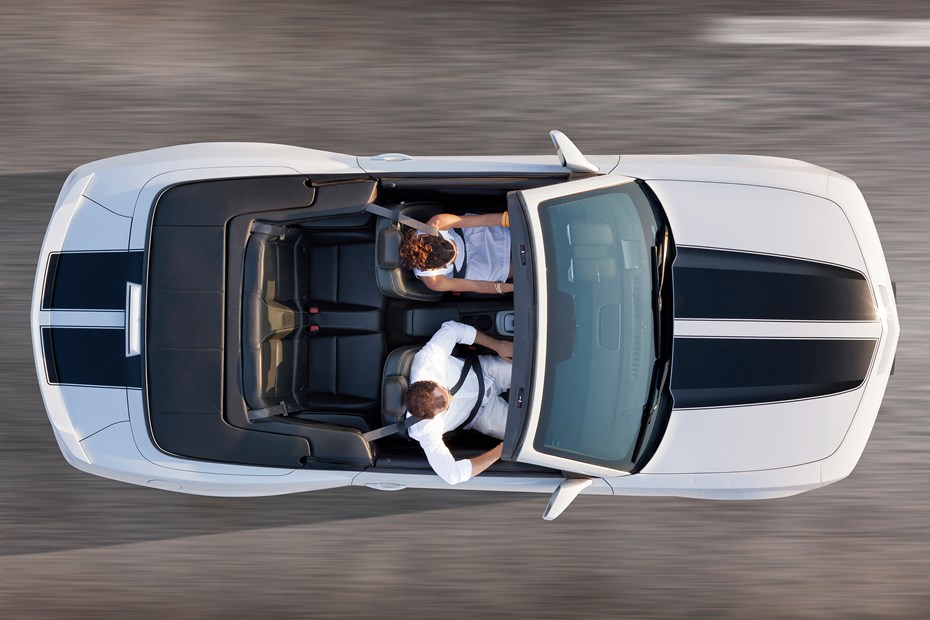
Buyers can pick from two engines, both 6.2-litre V8s. The ‘LS3’ is the high-output version that comes with a six-speed manual transmission only. It produces 432bhp and 569Nm of pulling power, allowing the convertible to accelerate from 0-62mph in a swift 5.4 seconds. The other choice is the ‘L99’. It’s only available with a six-speed automatic gearbox, and generates 405bhp and 556Nm.
0-62mph with this engine and transmission takes 5.6 seconds. The top speed for either version is 155mph. While the figures make for impressive reading, the engines don’t quite deliver the hammer-blow that you’d expect when you stand on the pedal. This is due to the convertible weighing almost two tonnes. Either engine, however, feels suitably muscular.
The manual version is even happy to burble along, and accelerate, at as little as 30mph in sixth gear. Both gearboxes are adequate but manual has a heavy clutch and shift effort, so you can’t just flick between gears when needed. You have to consciously think about your gear change. The automatic version also tends to habit slam home shifts when driven hard.
When driving normally, however, it changes gear cleanly and without fuss. You also get paddle shifters with the automatic, which work well. Lower the roof, accelerate hard and you can revel in the V8’s exhaust note – something that’s all too absent in the coupe.
It’s got the classic muscle car combination of a punchy V8 engine and rear-wheel drive. You might at this point think that the Camaro’s going to have underpinnings from the stone age, but fortunately that’s not the case. It has fully independent suspension all round, electronic stability control and powerful Brembo disc brakes. Chevrolet claims that it was designed to match European roads, with specifically tuned suspension.
Fast corners are dispatched without too much fuss, and minimal body roll. With wide tyres, there’s plenty of traction and grip to help keep the heavy Camaro on track. It’s a very easy car to drive and it doesn’t do anything unexpected, unless you really provoke it. Traction and stability control systems help keep the Camaro in good shape when you’re really pushing on.
The steering doesn’t offer much in the way of feedback but it’s well weighted and relatively precise. Despite having the roof removed, you’d be hard pressed to tell the differences on the road between the convertible and the coupe. There’s little flex, no rattles, and the car feels solidly planted. The convertible’s also heavier than the coupe, but it doesn’t seem to have suffered in the handling stakes.


